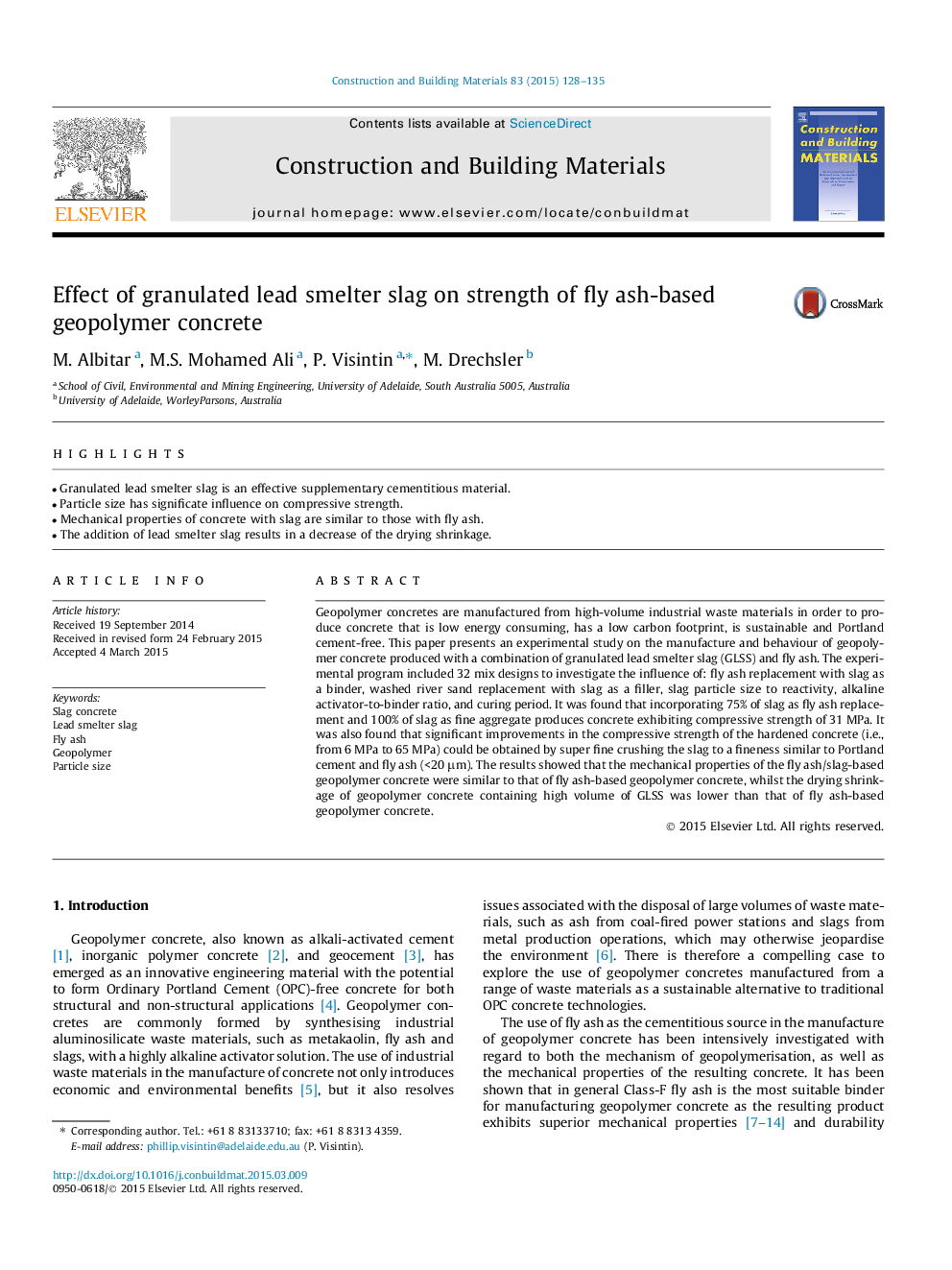| Article ID | Journal | Published Year | Pages | File Type |
|---|---|---|---|---|
| 6720916 | Construction and Building Materials | 2015 | 8 Pages |
Abstract
Geopolymer concretes are manufactured from high-volume industrial waste materials in order to produce concrete that is low energy consuming, has a low carbon footprint, is sustainable and Portland cement-free. This paper presents an experimental study on the manufacture and behaviour of geopolymer concrete produced with a combination of granulated lead smelter slag (GLSS) and fly ash. The experimental program included 32 mix designs to investigate the influence of: fly ash replacement with slag as a binder, washed river sand replacement with slag as a filler, slag particle size to reactivity, alkaline activator-to-binder ratio, and curing period. It was found that incorporating 75% of slag as fly ash replacement and 100% of slag as fine aggregate produces concrete exhibiting compressive strength of 31 MPa. It was also found that significant improvements in the compressive strength of the hardened concrete (i.e., from 6 MPa to 65 MPa) could be obtained by super fine crushing the slag to a fineness similar to Portland cement and fly ash (<20 μm). The results showed that the mechanical properties of the fly ash/slag-based geopolymer concrete were similar to that of fly ash-based geopolymer concrete, whilst the drying shrinkage of geopolymer concrete containing high volume of GLSS was lower than that of fly ash-based geopolymer concrete.
Related Topics
Physical Sciences and Engineering
Engineering
Civil and Structural Engineering
Authors
M. Albitar, M.S. Mohamed Ali, P. Visintin, M. Drechsler,
